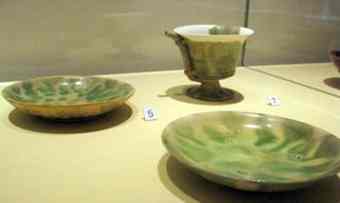ONE of the oldest and most important marine archaeological finds of the late 20th century will be showcased in Singapore.
 The Singapore Tourism Board and the National Heritage Board of Singapore will partner the Freer Gallery of Art and Arthur M. Sackler Gallery of the Smithsonian Institution in Washington, DC to hold the first exhibition late this year or early 2011, a joint statement said on Tuesday.
The Singapore Tourism Board and the National Heritage Board of Singapore will partner the Freer Gallery of Art and Arthur M. Sackler Gallery of the Smithsonian Institution in Washington, DC to hold the first exhibition late this year or early 2011, a joint statement said on Tuesday.
The exhibition will focus on the 1998 discovery of a ninth-century shipwreck and its cargo of about 60,000 objects from Tang dynasty China, ranging from mass-produced ceramics to rare items of finely worked gold.
The Arab ship and its cargo laid undisturbed on the ocean floor for more than 1,100 years until sea-cucumber divers discovered it off the coast of Indonesia's Belitung Island. The cargo confirms the existence of a direct maritime trade route from China to the Persian Gulf and beyond, well before the Portuguese arrived in Asia, the statement said.
Known as the Tang Shipwreck Treasure: Singapore's Maritime Collection, the cargo - which has never been publicly displayed on a grand scale - was purchased by Singapore with the support of the estate of the late Khoo Teck Puat shortly after its discovery.
'We are grateful for the opportunity to collaborate with Singapore on this historic project,' said Julian Raby, director of the Freer and Sackler galleries.
'The exhibition and tour will enable people around the world to connect with these extraordinary artefacts and feel the impact of a remarkable story that forever changes our view of ancient global trade. Singapore has acted with great understanding and forethought by protecting and preserving these objects collectively as a world treasure and for generously presenting them to the public in the form of an international travelling exhibition.'
The Sackler Gallery will host the US premiere in spring 2012, coinciding with the museum's 25th anniversary celebration. The exhibition is expected to travel for about five years to major museums in Asia, the United States, Europe, the Middle East and Australia.
Author: Bryan Huang | Source: The Straits Times [July 27, 2010]